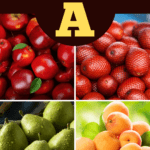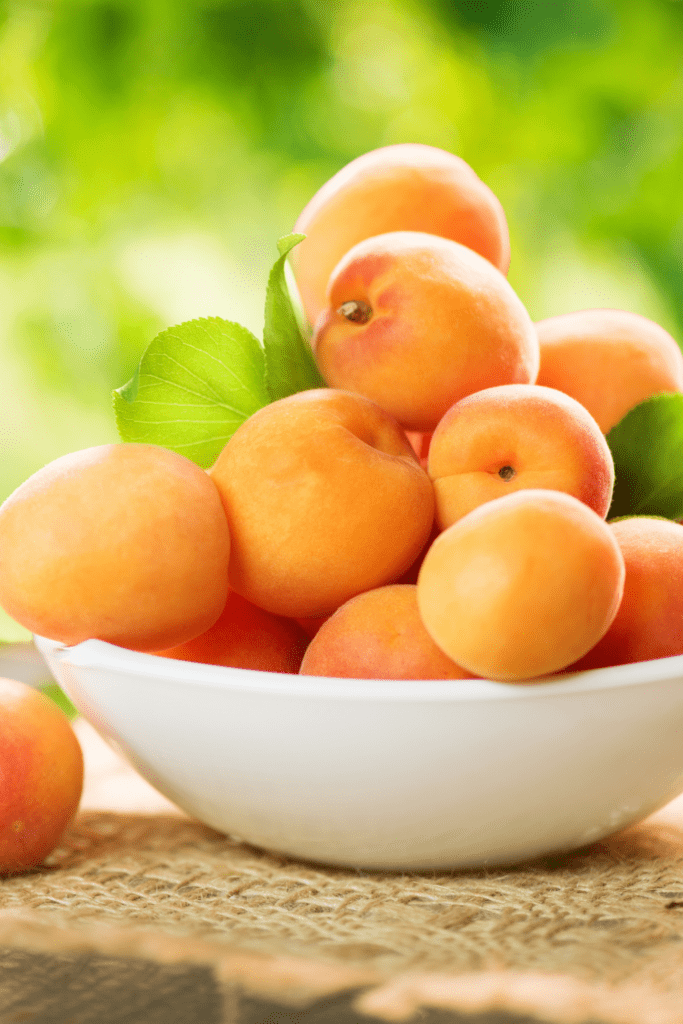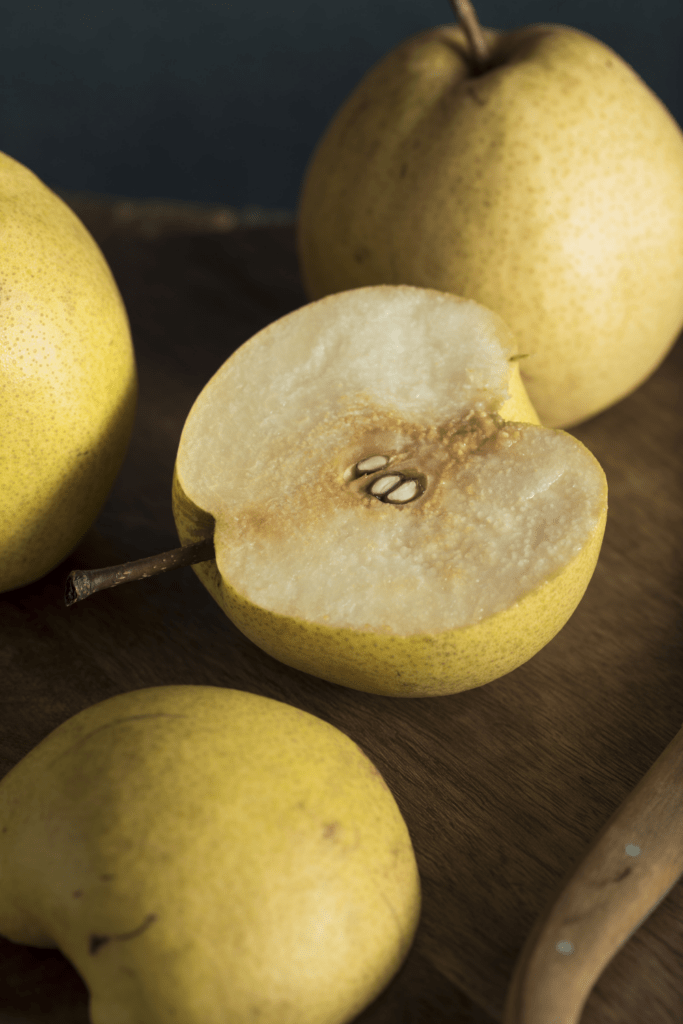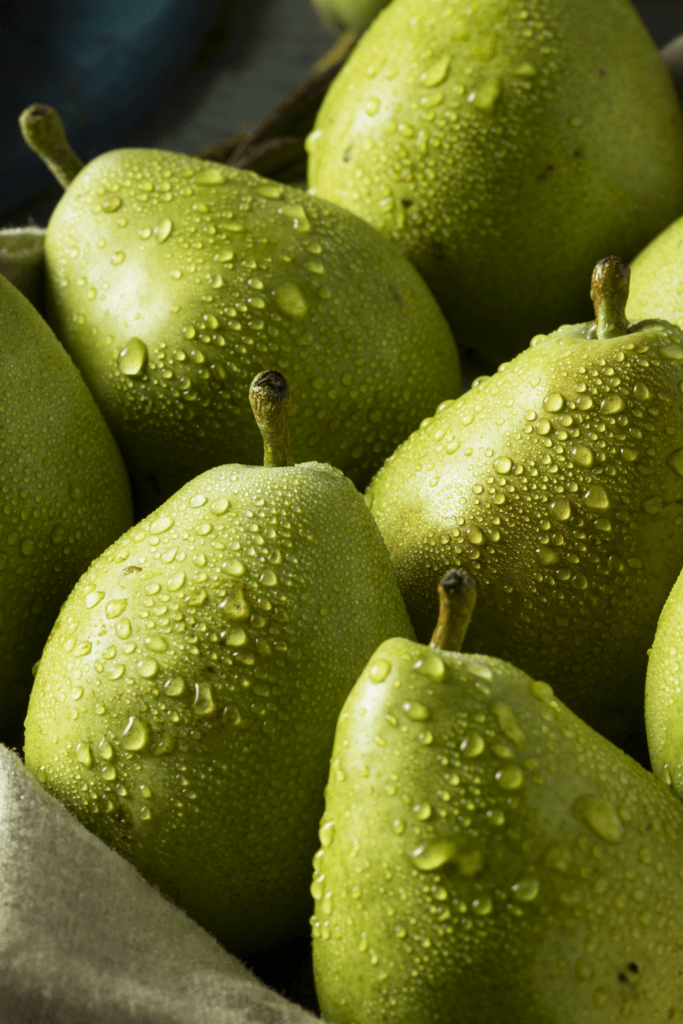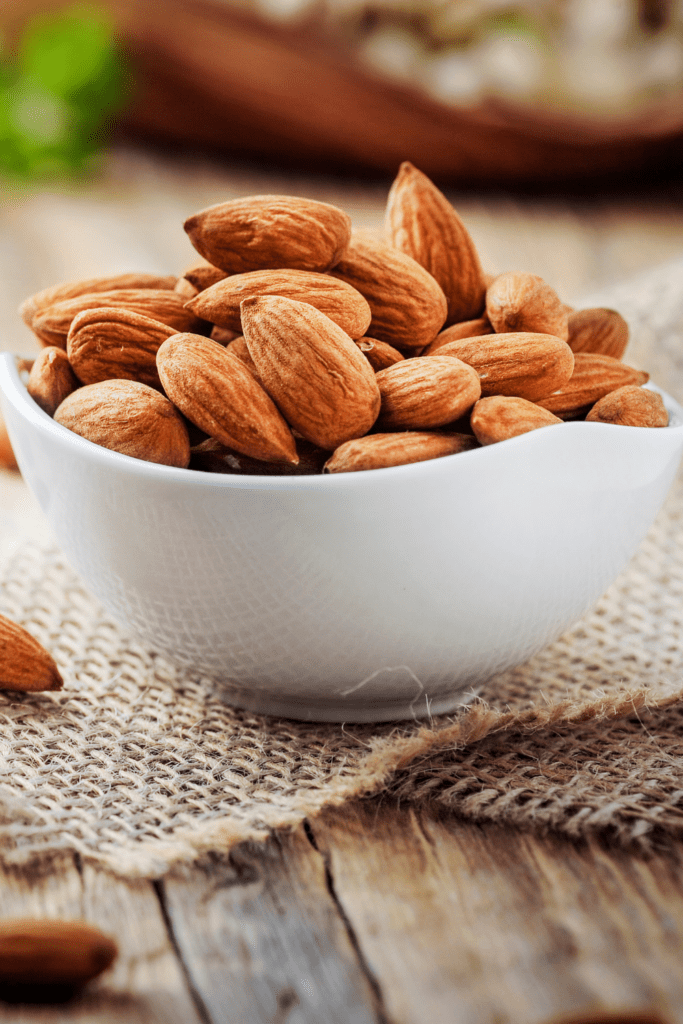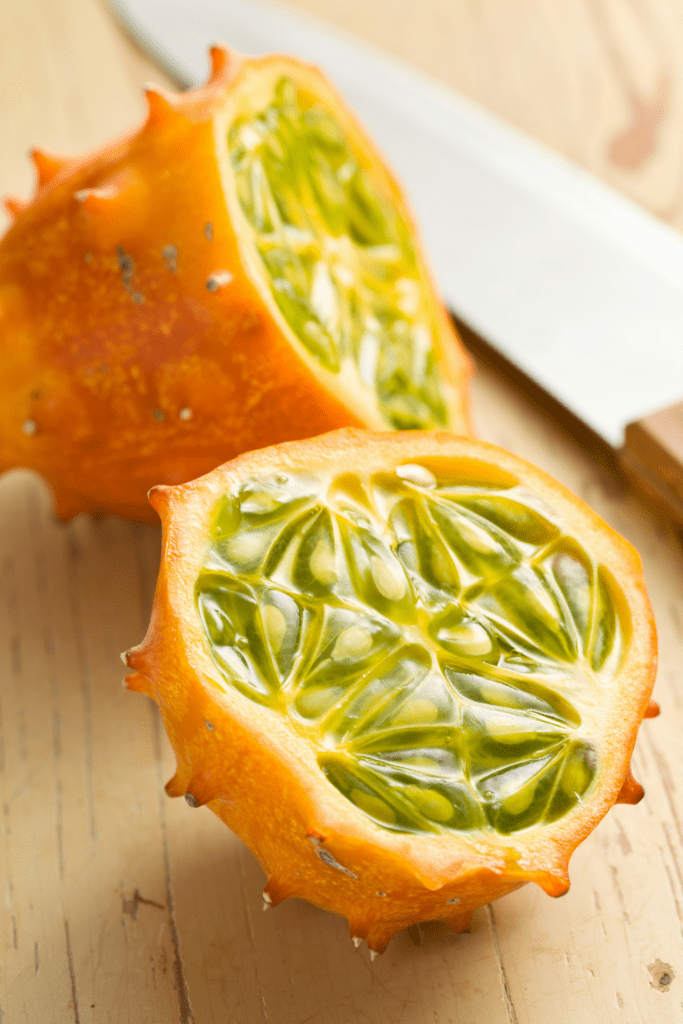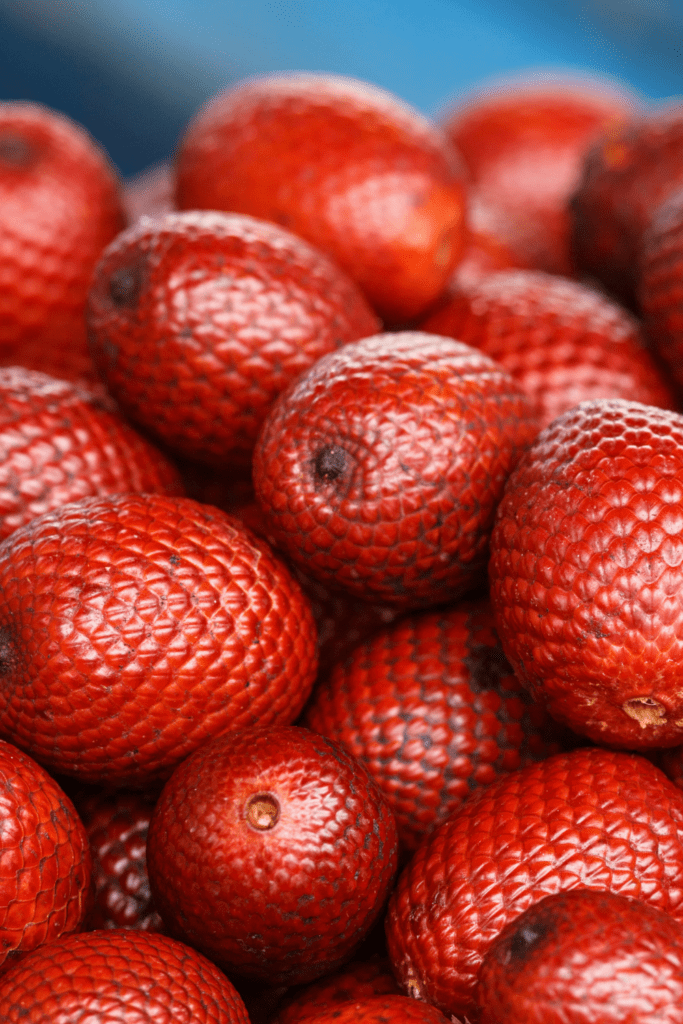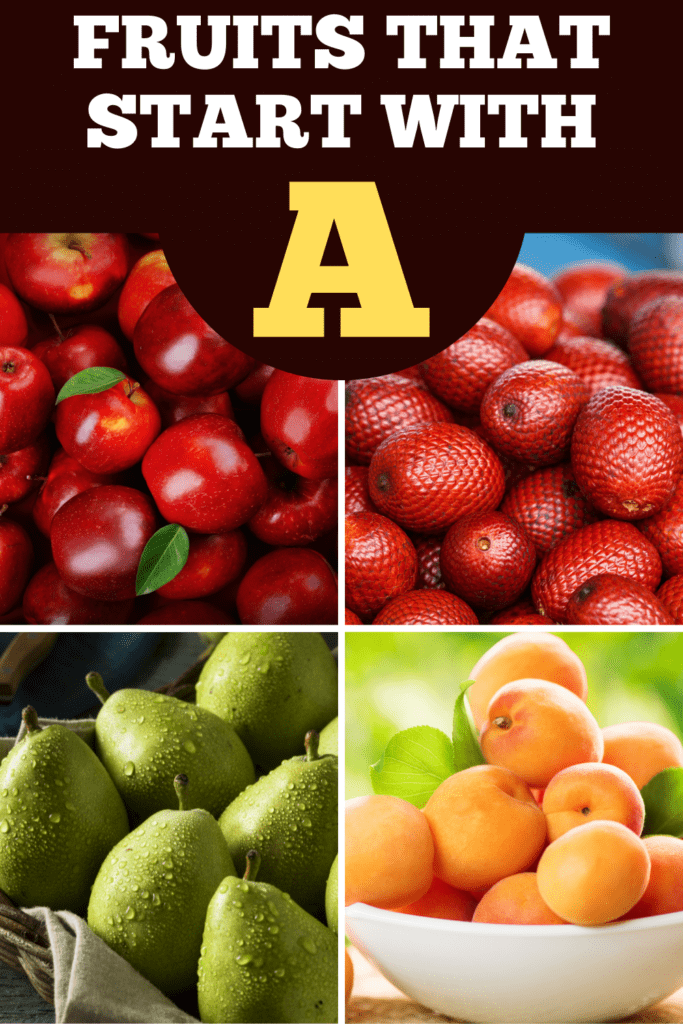The first couple of fruits – apples, apricots – come quickly, but it takes a little brainpower to think of more after them. Finally, though, I was able to come up with this list of 10. See if any of your favorite A foods made the list.
1. Apples
‘A’ is for ‘apple.’ It’s one of the first phrases we learn as children, along with “An apple a day keeps the doctor away.” Early on, we also learn that all teachers love apples, making them the perfect gift for Teacher Appreciation Day. We have all kinds of associations with the word apple. It’s probably one of the most universally known and loved fruits there is. So whether you like the red delicious or Granny Smith varieties, apples are one fruit you probably already know and enjoy.
2. Apricot
Apricots resemble peaches, but they’re usually smaller, and they’re not quite as sweet. They have a tart flavor that’s nonetheless delicious, and many people eat them raw. People also use apricots to make jelly, jam, preserves, and chutneys.
3. Avocado
Avocados weren’t popular a few decades ago, but now, almost everyone knows what they are. They’re a good source of “healthy” fats and provide plenty of health benefits. People credit avocados with aiding in digestion, decreasing depression, and preventing osteoporosis. They may even help reduce the risk of cancer. They have a soft, creamy texture that’s easy to eat and digest. People sometimes eat them cooked. More often, though, people eat them raw or after turning them into guacamole.
4. Asian Pear
Now considered the most popular fruit in Asia, Asian pears range from yellow to a light, spotted brown. They’re shaped more like apples than traditional pears. They’re also crispy like apples, unlike other, softer pears. When you bite into an Asian pear, you’ll get that satisfying crunch that makes apples so much fun to eat. Additionally, they’re sweet, juicy, and remarkably good for you. They’re a good source of vitamin C, vitamin K, and potassium. They also carry a third of the recommended daily dose of fiber. They can be expensive and sometimes hard to find in the U.S., but they’re readily available all over Asia.
5. Anjou Pear
Of all the pears people eat in the United States, Canada, and Europe, Anjou pears are probably the most common. Most people think of them as “regular” pears, but there are a few different varieties. In addition to the yellowy-green pears we know and love, there are also red Anjou pears, but those are less well-known. While they aren’t as soft as Bartlett pears (the other most commonly consumed pear in America), both green and red Anjou pears are relatively soft, much softer than Asian pears. They’re also reasonably juicy with a sweet and tangy flavor, although the red Anjous are usually just a tiny bit sweeter than the green ones.
6. Almonds
Although most of us think of almonds as nuts, they’re technically the seeds of a fruit. In the Western world, we mostly eat these seeds – the almonds we think of as nuts. However, in the East, people also eat almond fruit before it fully hardens. It’s sour and tangy, but plenty of people enjoy it, especially when they cover it in salt.
7. Acai
Acai berries are small, bluish-purple berries that look like a mixture between a blueberry and a muscadine. People often eat them raw or dried, and they use them in drinks and smoothies. Many people also ingest acai berries in concentrated pill form because some claim they help aid in weight loss. (There are no conclusive tests that prove this is true.) They are, however, rich in antioxidants, so in addition to eating them, many companies also use the berries in their makeup and facial/skincare products. In places where acai berries grow naturally, people eat them by crushing them into a purple paste; sometimes, they even cook with them. They taste like earthier, richer blueberries.
8. African Breadfruit
African breadfruit has a lot of names, including wild jackfruit, ukwa, and African boxwood. The fruits are large, growing almost to 20 pounds, and are usually round or slightly oblong-shaped. People eat both the flesh of the fruit and its seeds. The fruit is usually fried, baked, or roasted, although some people boil it to make stew or porridge. It tastes mildly sweet and smells wonderful. The fruit’s seeds are also edible, and they’re really good for you health-wise. People in Africa often grind them to make flour, and some people even use them to make alcohol. African breadfruit is high in fiber and potassium, and it has plenty of Omega 3 and Omega 6 fatty acids. It’s not easily obtained in the United States.
9. African Cucumber
Also known as the African horned cucumber or the horned melon, the African cucumber doesn’t look like any cucumber you’ve probably ever seen. For one thing, it’s a bright orangey-yellow! There are other green and reddish-orange varieties, but the most commonly consumed one is what I call orangey-yellow. In color and texture, it’ll remind you of a squash, but they don’t call it the horned fruit for nothing. It has tiny spiked barbs all over its skin. They hurt if you press too hard on them, so be careful. The inside of the horned melon looks a lot like a cucumber. It’s green and contains tons of seeds. It even tastes like a milder version of a cucumber, but the consistency is much more watery.
10. Aguaje
This is another fruit with a lot of names. Some people call it the moriche palm, the ita, or the canangucho. In essence, it’s a palm tree fruit that almost doesn’t look real. It’s about the size of a chicken egg, and the best way to describe it is to say it looks like a miniature dragon egg from Game of Thrones. You can eat the fruit raw; it has a sweet but tangy flavor. More often, people use it to make a type of juice or alcoholic drink. Click on a star to rate it!
Average rating 5 / 5. Vote count: 1 No votes so far! Be the first to rate this post.
Share on social media: Let us improve this post!

